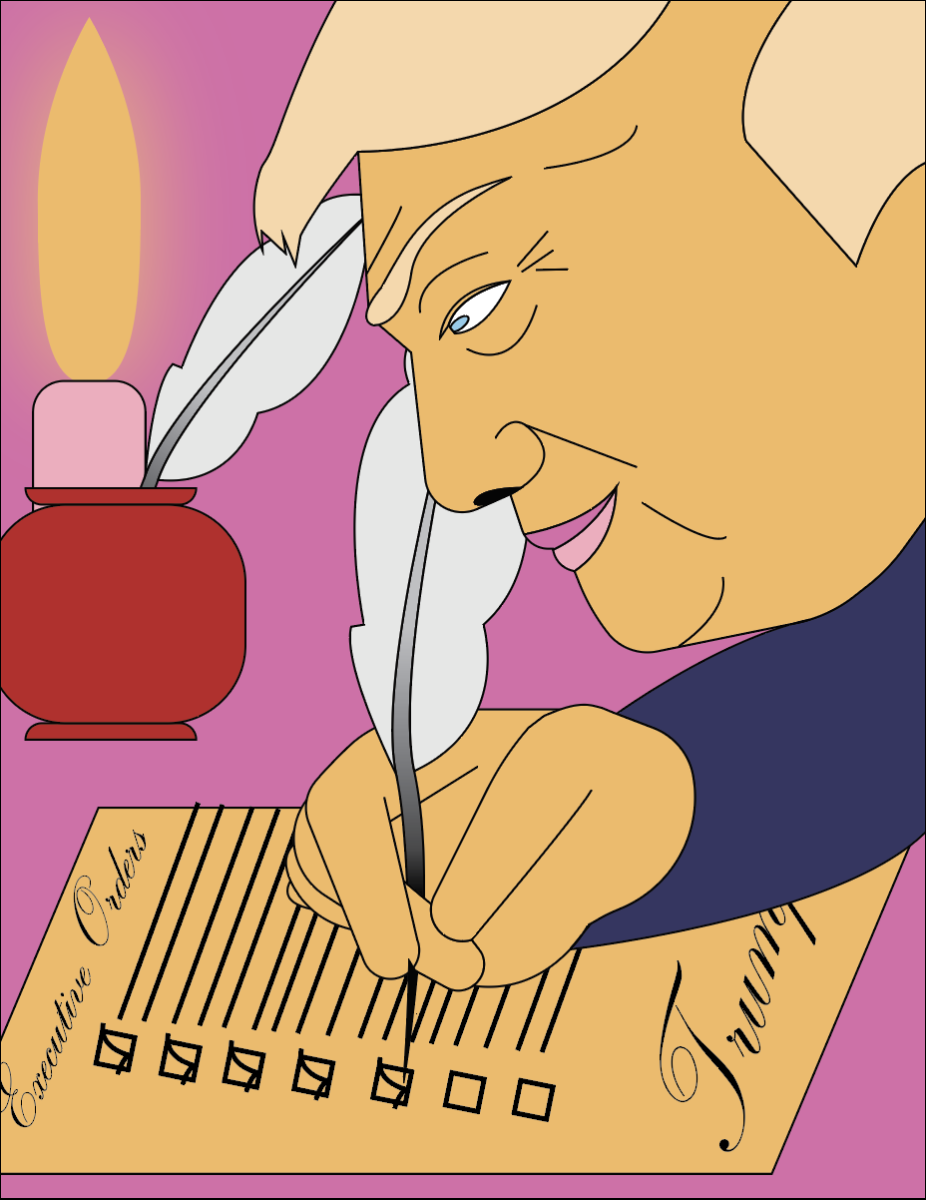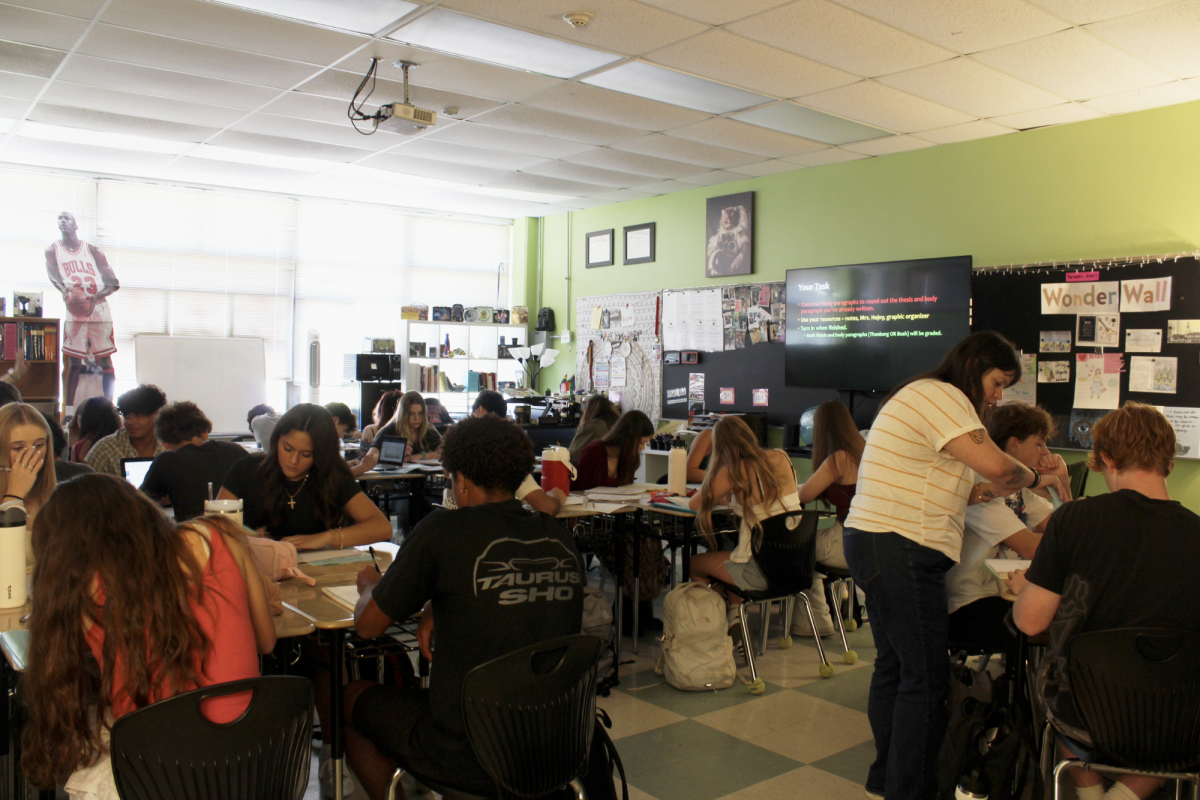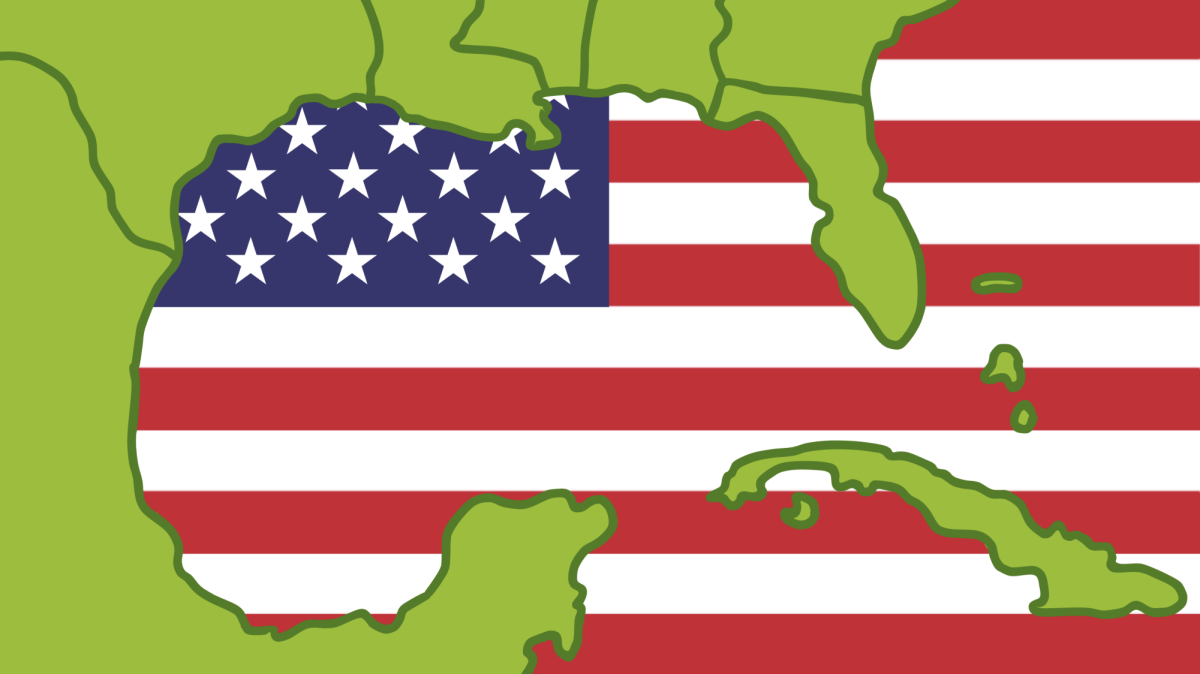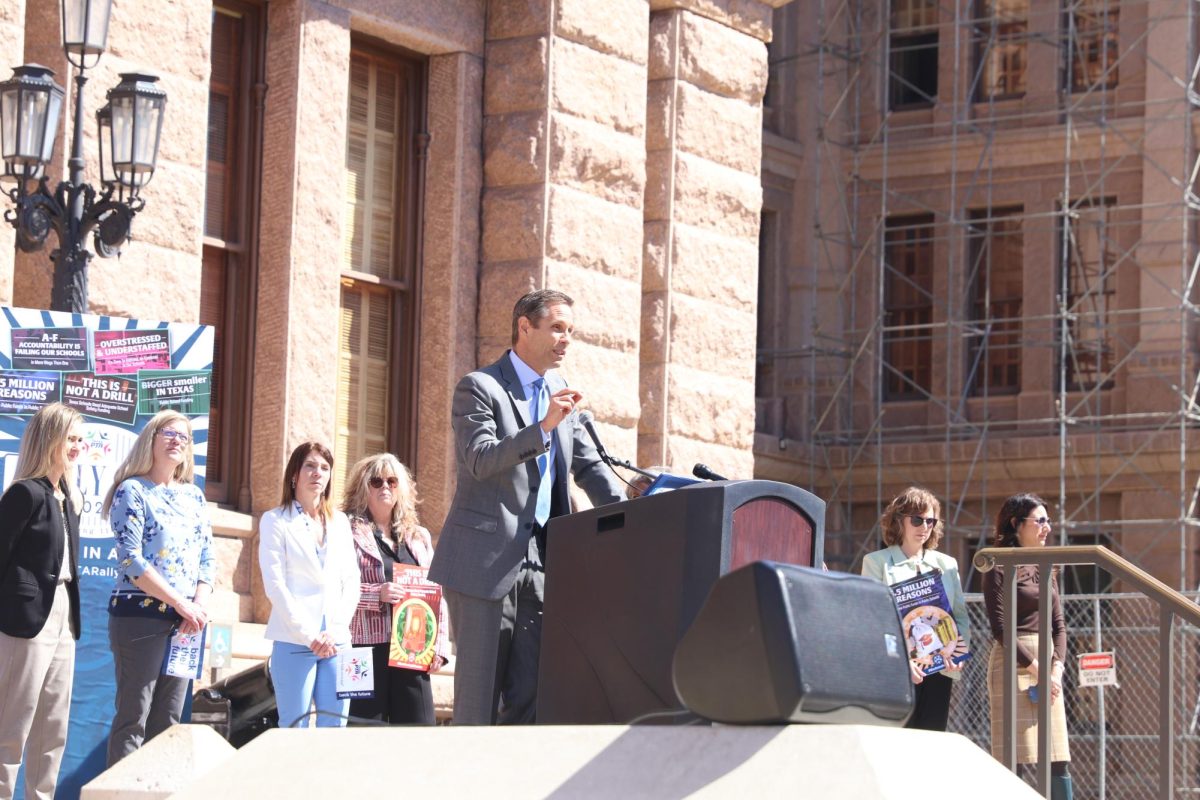In the United States, the president is able to implement executive orders, which are directives that contribute to the management and operations of the federal government. With the re-election of Donald J. Trump as the 47th U.S. President, he has begun to act on his campaign promises by signing various executive orders. His objectives include heightened border security, more affordable energy, limiting federal hiring, and more.
“An executive order is not as powerful as a piece of legislation,” history teacher Charles Stampley said. “An executive order is often challenged in court. It is only a temporary fix.”
Trump has been reversing some of former President Joe Biden’s policies, including the Executive Order ending Advanced Racial Equity and Support for Communities Through the Federal Government along with getting rid of Executive Order 13988, Preventing Discrimination on the Basis of Gender Identity or Sexual Orientation.
“I honestly think that reversing many of Biden’s policies immediately after coming into office was not the most effective decision,” junior Ayah Hakim said. “However, this is definitely a pattern that many newly elected presidents follow.”
Trump voiced that one of his primary goals while in office is taking action to secure the border and the mass deportation of undocumented immigrants. While concerns revolving around the impact of illegal immigrants are a contentious topic, studies show many immigrants are actively contributing to the workforce. According to the Bureau of Labor Statistics, 68% of the foreign-born population above the age of 25 are working, compared to 63% of native-born citizens. According to the Budget House Committee, there have been over eight million immigrants who illegally crossed the U.S. border during Biden’s term.
“Immigrants who came in under Biden, most of them, they’re not working, they’re just kind of being a burden to this country,” sophomore Cade Venable said. “People that know this more than anything are people who immigrated here legally, now there’s all these people pouring in and just cutting in front of everybody in line, and cheating the system.”
Trump has also implemented various executive orders surrounding climate and the environment. Trump has withdrawn the United States from the Paris Climate Agreement, eliminated Biden’s policies encouraging electric vehicles, and repealed multiple Biden administration executive orders regarding climate change, including the guidelines for establishing climate-related parts of the Inflation Reduction Act of 2022.
“I think that as such an important nation, I believe that we have a duty to focus on climate,” social studies student teacher Ana Guerra said. “We’ve had presidents before, like Teddy Roosevelt, talk about the importance of nature. I just wonder, what direction are we heading if we forget that.”
Trump also declared the first national energy emergency in U.S. history, enabling the current administration to suspend environmental rules or expedite mining projects, and open the Alaskan wilderness to more oil and gas drilling. According to the Energy Information Administration, crude oil imports of about 6.48 million barrels per day, accounting for 76% of U.S. total gross petroleum imports in 2023. The top five source countries of U.S. gross petroleum imports were Canada, Mexico, Saudi Arabia, Iraq, and Brazil.
“I think Trump’s oil and gas exploration is going to be good because under Trump we got all of our energy domestically,” Venable said. “Biden kind of stopped doing that, which I think is a bad thing because we had to rely on foreign countries like Saudi Arabia and Russia for our oil.”
On January 21, Trump signed an executive order stating that Diversity, Equity, and Inclusion (DEI) policies, preferences, mandates, and programs would be completely removed from the federal government. This has received a range of reactions, some arguing that the policy promotes fairness of qualifications while others believe that it defeats efforts to address inequality.
”I don’t think it matters what skin color you are, I think it matters if you can do the job,” Venable said. “I don’t think they should have to meet a certain number or certain quota of any particular race. I think it’s just who can do the job.”
As of February 5, President Trump has signed a total of 54 executive orders, along with revoking a record 96 previous executive orders.
“His executive orders so far have been very strong, he came in, he knew what he wanted to do, and he was not at all hesitant to do them,” Guerra said. “But an executive order is not a law, they’re still contested, and he still has to abide by checks and balances, just like any other president has to.”













